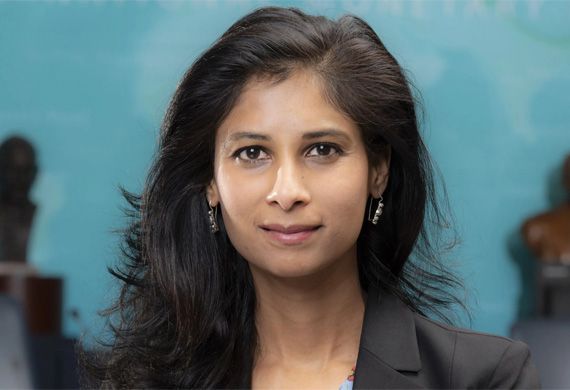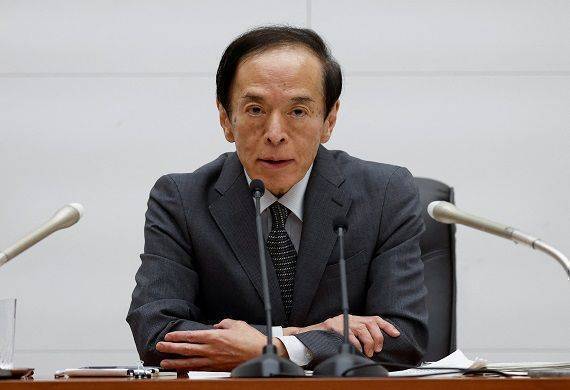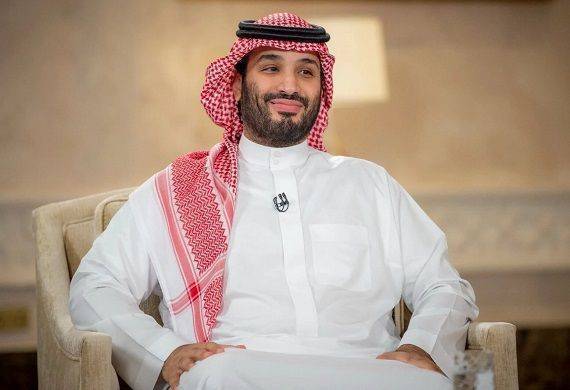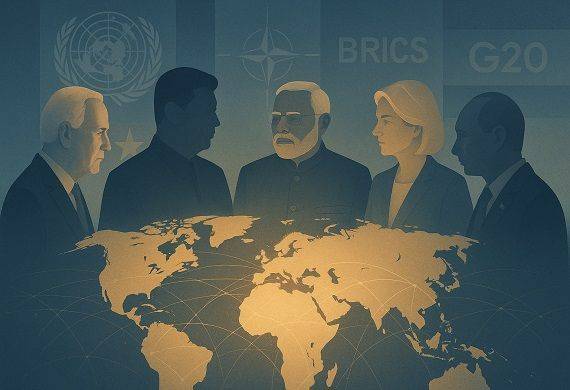Collaboration for Global Economic Growth Amid Debt, Bias, and Innovation in 2025
By Gita Gopinath, First Deputy Managing Director of International Monetary Fund

Gita Gopinath, First Deputy Managing Director of International Monetary Fund shared her perspectives at the 2025 edition of World Economic Forum on the future of global growth themed ‘What's next for global growth.” She sheds light on critical issues which span across the challenges posed by historic global public debt, the risks of optimism bias, and the transformative opportunities offered by emerging technologies.
- Addressing Global Public Debt
- Navigating Economic Divergence and Uncertainty
- Unlocking Opportunities with Generative AI
Managing Impending Risks
Global public debt is projected to surpass USD 100 trillion, which has required countries to make significant fiscal policy shifts. With this, there is a critical need for targeted strategies to manage borrowing costs and mitigate risks pertaining to currency depreciation and elevated oil prices. To take for an instance, economic weaknesses in Europe and challenges in China showcase burgeoning regional divergences. Adding to this, policy uncertainty surrounding trade, immigration, and private investment amplifies global unpredictability. Given this impending situation, Generative AI holds transformative potential, with the capability to boost global productivity by 0.8 percentage points; thereby enhancing the current 3% growth rate. Nations also have opportunities to integrate into global supply chains, further bolstering economic prospects. However, despite opportunities, elevated borrowing costs, currency depreciation, and volatile oil prices present formidable challenges which require careful policy navigation and collaboration among global leaders.
Rising Regional Disparities
If we look at the key statistics, it highlights the global economic divergence, wherein, the U.S. is growing at 2.7% while Europe lags at 1%. This underscores significant regional disparities. Another compelling figure is the estimated USD 3 trillion annual investment required by emerging and developing nations to achieve sustainable development goals, which is a daunting challenge but also gives way to transformative opportunity. So to say, for 2025, agility must be a top priority for leaders amid pivotal global policy shifts. Also to add, building economic resilience to navigate these changes effectively is critical. So, leaders must focus on adaptive strategies to steer sustainable growth and address pressing investment needs and regional disparities in the global economy.
Reimagining growth as sustainable, inclusive, and resilient requires prioritizing investment in development across some of the weakest medium-term projections in decades. And to achieve this, nations must address some of the pressing challenges such as climate change by investing in the green transition. This can be carried out by developing new high-tech industries, and enabling secure energy. These steps not only promote sustainable prosperity but also build resilience to global uncertainties. Furthermore, when it comes to ensuring equitable economic benefits, growth must also be inclusive to create opportunities, irrespective of sectors or geographies.
Today, emerging markets account for nearly 45% of global GDP and are shaping the global economic landscape. If we look at the past decade, their domestic developments have created spillover effects which can be compared to those of advanced economies. Hence, this interconnectedness highlights the need for global collaboration and cooperation. So, by working together, countries can harness the potential of emerging markets; creating a win-win situation by addressing common challenges, fostering economic resilience, and securing sustainable growth for the betterment of the global economy.
Fiscal Responsibility, Technological Equity, and Inclusive Leadership
As global public debt was projected to reach USD 100 trillion by 2024 which is further expected to grow in 2025, it presents a significant challenge for global growth. To address this, countries must adopt fiscal adjustments and consolidations that prioritize public investment while improving spending efficiency. Furthermore, fiscal policy should focus on being growth-friendly by maintaining sound fiscal frameworks while ensuring public support for needed reforms.
With this, the post-reform world would feature countries with stronger fiscal buffers, better prepared for future shocks, and capable of responding swiftly to crises. A balanced approach to public investment and taxation is crucial to avoid stifling innovation and growth while managing debt sustainably.
Moreover, it's crucial to recognize the risks of "optimism bias" when projecting debt levels. If we look at it historically, debt projections have often underestimated the eventual outcome, with actual levels sometimes being 10 percent higher than expected. Here, two key factors contribute to this. First would be the major global shocks, such as the financial crisis and the pandemic, which are difficult to predict but have a significant impact on increasing debt. Second, governments often fail to fully implement the fiscal measures they plan. So to mitigate these risks, countries must be cautious in their forecasts, ensure fiscal discipline, and prepare for unforeseen shocks to avoid exacerbating the debt burden.
Furthermore, it's vital to focus on inclusive access and support systems to address the risks of emerging technologies and especially ensure they don't exacerbate inequalities. Here, investing in public digital infrastructure can ensure that everyone can participate in the digital economy and benefit from innovations like AI. Additionally, governments must strengthen social safety nets. This can help workers transition to new roles as automation evolves. Hence, protecting those at risk of job displacement. Also, reskilling initiatives and targeted education are essential investments to prepare the workforce for the changing job landscape to mitigate the widening inequality gap.
Another noteworthy aspect would be to foster an environment where people feel comfortable disagreeing. And for this to happen, leaders must lead by example. By openly acknowledging their own mistakes and flaws, one can create a culture of accessibility and openness. This encourages others to share their opinions without fear of judgment. Additionally, leadership should prioritize honing essential skills such as communication, collaboration, and listening. In times of change, it's crucial for leaders to ensure they bring society along in their decision-making process. Engaging with a wide range of perspectives and involving people in policy design builds trust, transparency, and helps mitigate resistance to change.
“It's a reminder that no leader should operate in isolation - by consulting with experienced individuals, you can gain clarity and make more informed decisions, reinforcing the importance of collaboration and continuous learning.
Gita Gopinath
First Deputy Managing Director of International Monetary Fund
What’s Next?
Going forward, it's crucial to remain open-minded about the evolving policy landscape while staying focused on macro and financial stability. Technological advancements offer solutions to major global challenges like low growth, climate change, and aging populations. Institutions like the IMF must ensure that these technological innovations benefit all countries and people. Personally, seeking advice from others has been invaluable. It's a reminder that no leader should operate in isolation - by consulting with experienced individuals, you can gain clarity and make more informed decisions, reinforcing the importance of collaboration and continuous learning.
.jpg)



